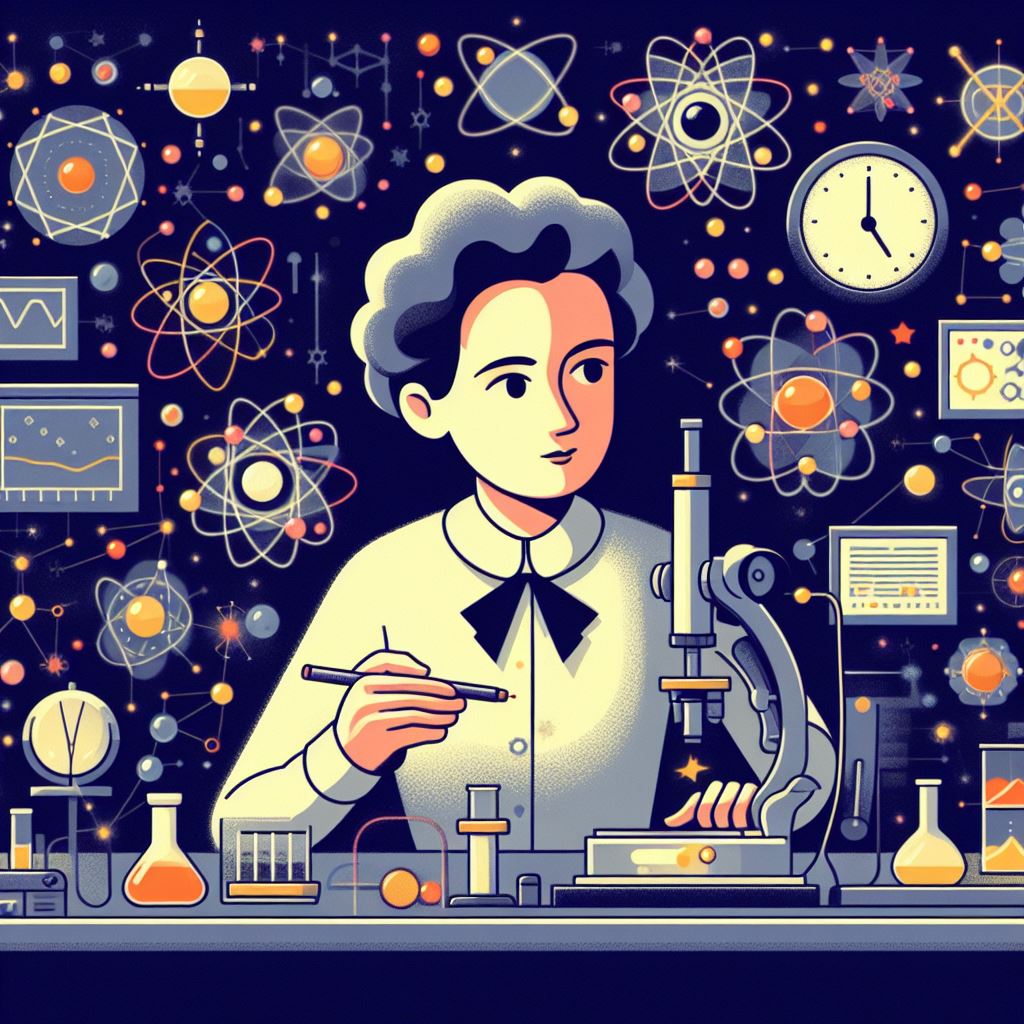Marie Curie is one of history's most celebrated scientists, breaking astonishing new ground while overcoming enormous odds as a woman pioneering radioactivity research around the turn of the twentieth century. Her perseverance led to revolutionary breakthroughs in unravelling the mysteries of radiation, atoms, and chemistry, ushering in modern nuclear science, while applications of her work had a profound impact on medicine, industry, war technology, and other fields.
This article focuses on five key innovations that Marie Curie pioneered at the cutting edge of her epoch and proved instrumental in fundamentally advancing human knowledge and society.

Discovery #1 - Polonium & Radium: New Radioactive Elements
Marie Curie and her husband Pierre searched for the recently discovered invisible energy discharged by uranium compounds in Paris in 1898.
Leading scientists at the time incorrectly assumed that this "radiation" was some kind of novel electrical influence or emission that didn't require any new physics to explain. The Curies' systematic measurements with electroscopes, on the other hand, revealed two previously unknown types of radiation distinguished by penetration strength through screens. Further mathematical analyses of uranium ore compound radiation levels revealed the presence of distinct chemical elements. By 1902, the couple had isolated concentrated traces of two previously unknown radioactive elements, polonium and radium.
This groundbreaking discovery of new elements challenged long-held beliefs that the periodic table already encompassed all of nature's elements. Instead, the discovery alchemically confirmed transmutation theories, resulting in the age of radioisotope science alongside other modern pioneers.
DDiscovery #2 – Quantifying Radioactive Decay
To pioneer quantitative assays with novel radioactive materials, Marie Curie had to invent safe controlled experimentation techniques and study their curious behaviours systematically. One breakthrough came from accurately characterising their rapid spontaneous decay process, which emits energetic rays over time and contradicts ideas about matter permanence. Curie developed a mathematical decay function based on her measurements using sensitive instruments to count discharges, demonstrating that concentrations halve (on average) predictably each interval.
This exponential law finally explained the disappearance and reappearance of unclear emissions. Furthermore, its probability-driven foundation is consistent with emerging quantum and statistical models that are leading the way away from classical concepts and towards intrinsic uncertainty in atomic scale processes.
Quantifying radioactivity was critical to safely handling hazardous materials and developing tracer methods that are still used in medicine and industry to assess biological functions or wear rates. The dependability of her characterised decay also enabled radiometric dating techniques for calculating the ages of materials such as meteorites and fossils, which was critical in proving Earth's enormous antiquity.
Discovery #3 – Radiation’s Effect on Cells
Curie, while investigating potential applications and characterising remarkable new radioactive materials, first reported strange health effects on human bodies . Before leukaemia and other severe conditions became undeniable among those who routinely handled the substances, modern scientists mostly ignored the dangers of radiation exposure. Marie Curie's meticulous notebooks detailed the strange skin lesions she developed.
She demonstrated that even brief exposure to highly radioactive sources hampered cell development and creature growth at high intensities by purposefully exposing cell cultures and small organisms to highly radioactive sources.
These experiments demonstrated direct biological effects from mere proximity, foreshadowing genetic mutations and pointing to potential medical treatment options.
Her empirical cellular radiation impact findings provided powerful answers to physiological effects questions that had perplexed early researchers and doctors dealing with potentially lethal exposures. However, they also opened up avenues such as targeted tumour therapy using radiation, which is still used today, laying the groundwork for modern radiological medicine.
Discovery #4 - Radioactivity's Uniqueness to Certain Atoms
Following the remarkable discovery of particle emitting uranium and thorium based compounds, Curie sought deeper insights into radioactivity's origins through a creative experiment differentiating atoms by type. She first measured the constant energetic output of a standard uranium compound over time to determine the total expected radioactivity rate spread uniformly across molecular content. Curie then separated concentrated purified uranium and compared its reduced output to the original reference.
When she discovered that the isolated metal alone gave off rays in the same proportions per uranium quantity. She demonstrated radioactivity as an atomic property distinct to those elements rather than arising uniformly between combined atoms.
This revolutionary discovery established radiation as a fundamental fabric of certain atom types, rather than being externally triggered or based on contingent molecular arrangements. It eventually influenced the modelling of radioactivity's quantum mechanical nuclear origins. The uniqueness and conceptual clarity of the innovative experiment chairing radioactivity concentrations in specific atoms became iconic.

Discovery #5 - Radium’s Enduring Glow: Beta Decay
After recently discovering radium's remarkable penetrating radiation, Curie observed a persistent glow still emanating from radium salts hours after preparations concluded, while control samples remained dark.
This strange lingering light resulted from trace reaction products absorbing energy and reemitting it slowly at a faint brightness unnoticeable in daylight. Marie Curie correctly deduced that unknown radium particles transferred energy to other molecules. She meticulously tracked glows and discovered that only certain substances were activated by radiation, implying that these secondary messengers must be fundamentally different from Alpha and Gamma rays.
Years later, Rutherford and others discovered these particles as electrons ejected at high speeds known as beta rays, which resulted from neutron conversions underlying transmutations.
Curie's discovery and early characterization of enduring glows from radium preparations were the first observations of beta decay, raising questions that eventually led to the discovery of weak and strong nuclear forces driving radioactive transitions. Because of her innovative observational insights, glowing substances are still widely used in luminescent dials, signs, and indicators.
Conclusion: A Legacy of Brilliance and Impact
Marie Curie's significant discoveries revolutionised our understanding of the physical world, paving the way for advances in medicine, industry, and warfare. Her groundbreaking work with radioactivity was a watershed moment in science, and her legacy continues to inspire scientists and researchers today.